My grandmother's roses greeted me, as I stepped out of the car and it was more than I was expecting! I haven't been in this house since December and the sight of the blooming roses was a pleasant surprise. You see, no-one lives in this house anymore, at least not permanently and I don't come often enough either. Usually two times per year. So a surviving and flowering rose is huge in my book!
The next thing I saw was the garden. And it was exactly as I was expecting it to be, in a state of chaos! Weeds as tall as myself or even more, small trees trying to find some sun in this overgrown jungle and me getting ready for a massive attack with my grass trimmer!
If you don't take my word for it, take a look at the before/after shots below.
But as intense as it might was, the garden was just a gentle warming up! My main task, this time of the year is to tide up the olive groves. That means endless hours of cutting weeds and expansive plants, removing dead branches and getting the fields ready for the harvest that will, hopefully, come in November, with an abundant crop!
If you feel that I might overreact with this tiding up thing, let me show you, in the two pictures below, what a tended and an untended olive grove looks like. In the second case, even if the olive trees are full with fruits, it is impossible to collect them, so it is like you don't have them at all!

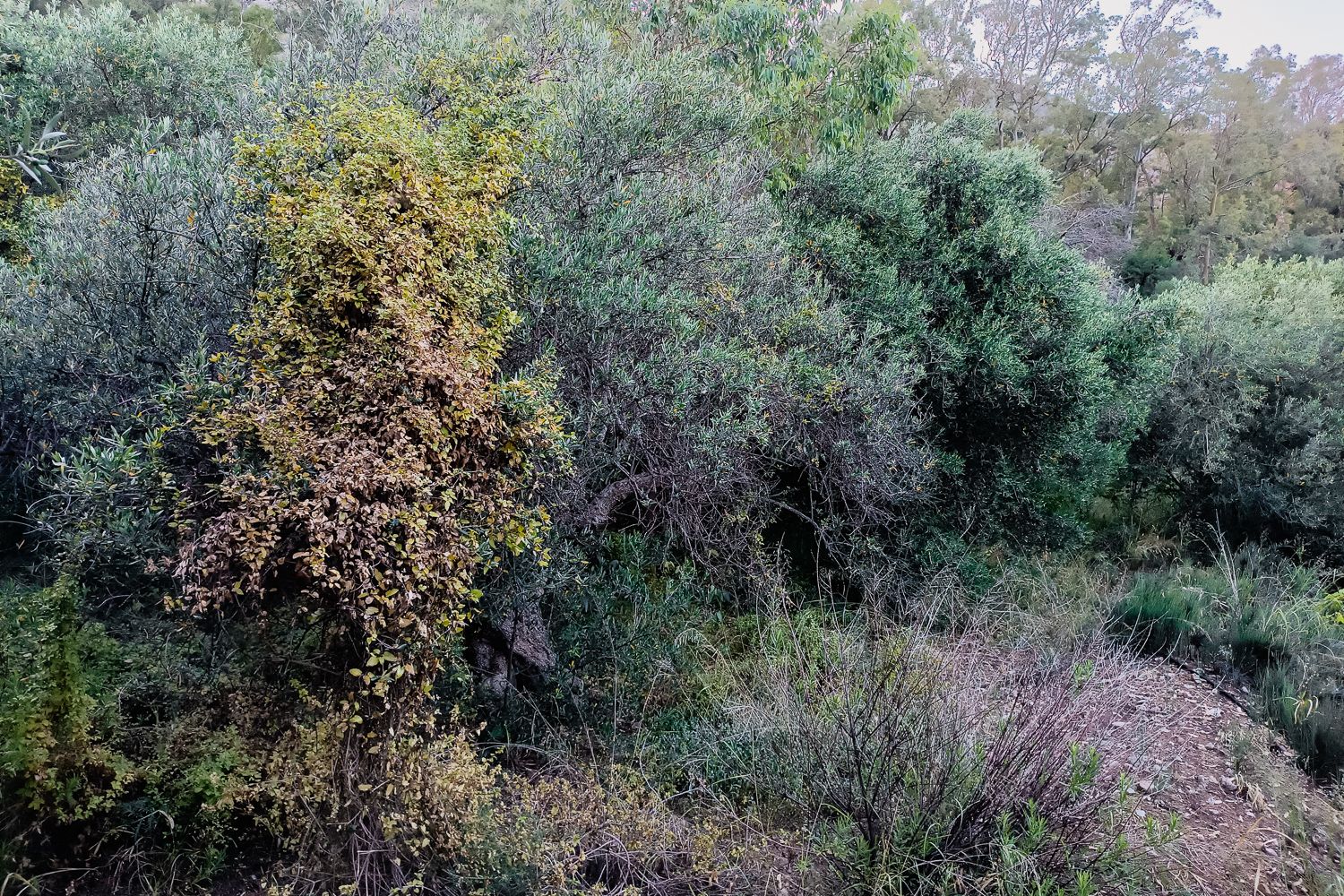
Of course there are many ways that farmers keep their olive groves in good shape. One common practice is tilling the soil, uprooting everything that grows around the olive trees. Another practice, unfortunately quite common too, is spraying the field with weed killers.
Myself I don't like tilling and I most certainly, don't spray poisons on my land. I follow a rather tiring practice that allows me to keep the field as I wish and at the same time, makes the minimum damage to the flora that coexists with my trees.
I wait until the end of May, when most of the weeds have seeded and then I cut them with the weed trimer, using a mulching blade. So I don't interrupt the natural circle of the annual plants while I leave the roots of the perennial ones unharmed. Plus that I make exceptions :)
Like the capers (pic below), that are at their best this time of the year and I just can't destroy them. Instead, I cut them with a pruner in November, when they are dormant and every year they grow back! Or like some oregano or sage bushes that I let them be, if they are not too much in my way.
This time of the year, the olive fruits have just formed, they don't even have a core inside them, and they are beautiful and intact. In a few days/weeks though, the olive fruit fly (Bactrocera oleae) will start laying it's eggs in the fruit, causing the loss of a big part of our production. Part of my job as an organic farmer is to minimize that loss with the most eco friendly way possible.
So far we (the organic farmers) haven't find a totally natural way to deal with the olive fruit fly and what we do is choosing the lesser of two evils. Those yellow envelopes, hanging from trees below, are filled with a substance that attracts this specific fly (and hopefully nothing else) and kills them if they sit on it. Of course there is an amount of poison on the yellow surface but it is practically impossible to leak to the environment and when used properly, highly unlikely to harm other organisms.
I am not totally happy with them but until a better solution comes up, this is not too bad.
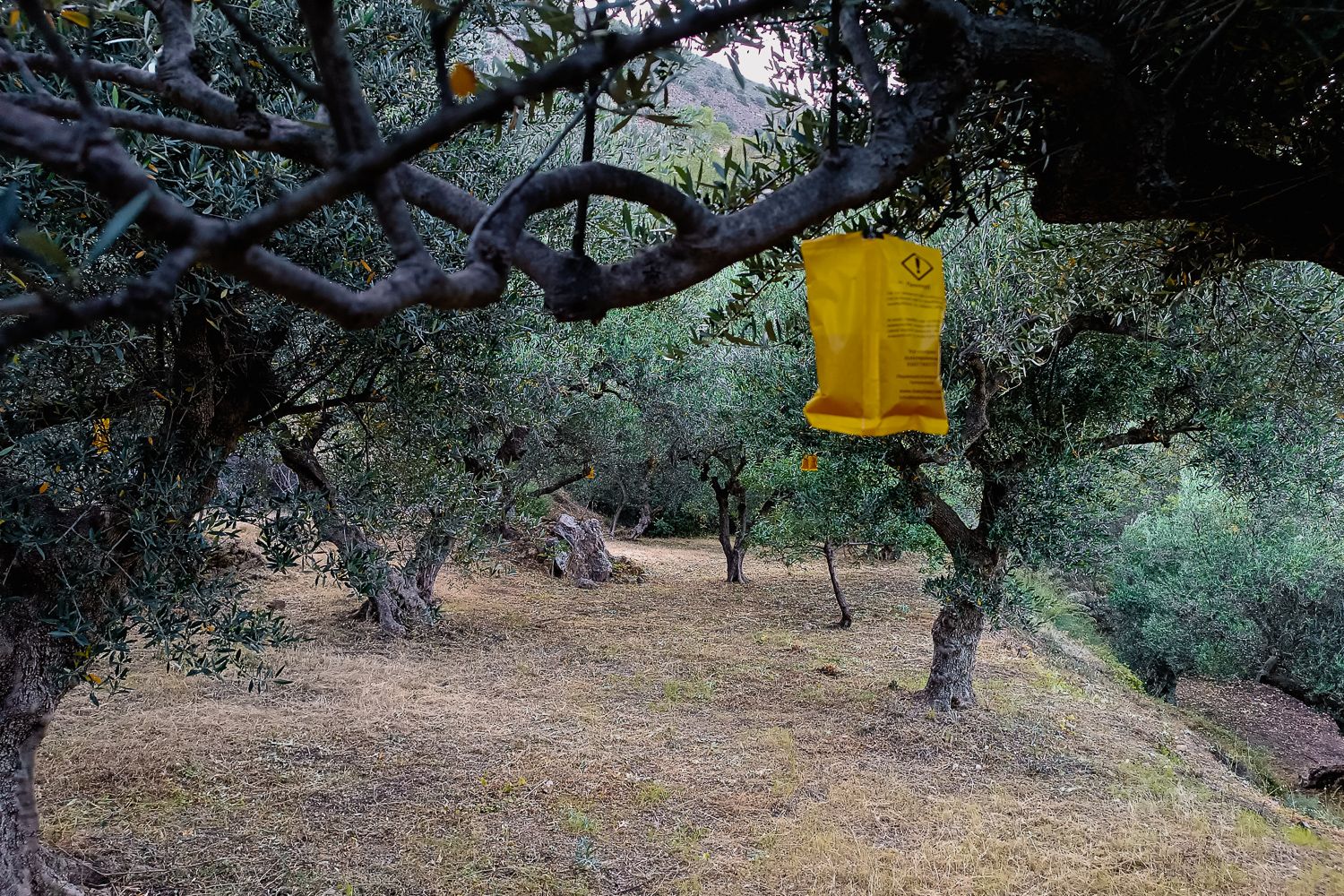
Apart from those annual preparations, this year it is also about closing loose ends. And saying goodbye to two olive groves that we were renting and cultivating with @traisto for many years. But now it is time to let them go and move forward. It is weird when you work on land that you don't own. You know from day one that at some point you'll have to leave it and yet you get attached to it. At least I do. I never managed to see, working with the land, as an ordinary job.
And it so happens that they are the two olive groves with the best view, one to the mountains, the other to the sea :)
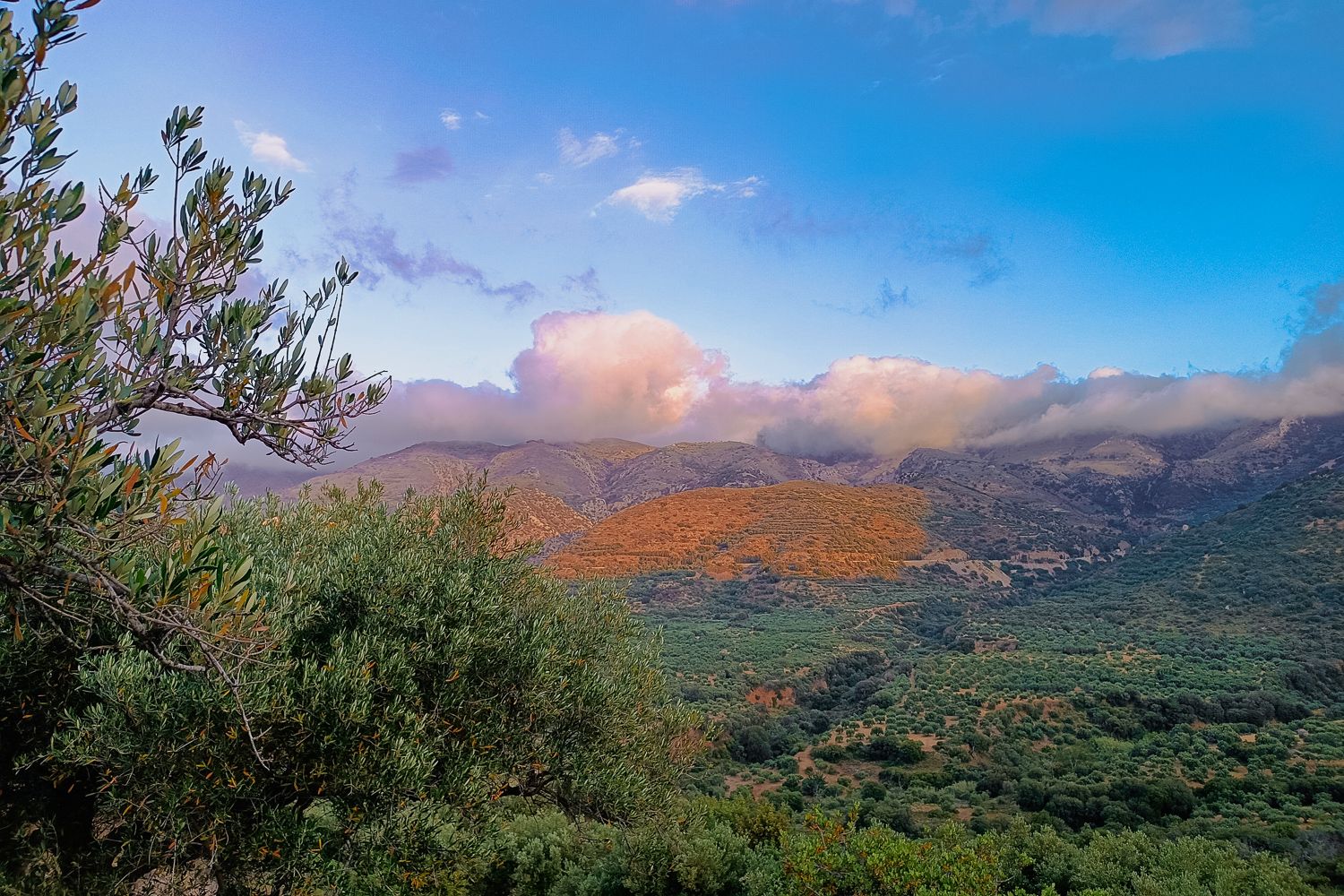
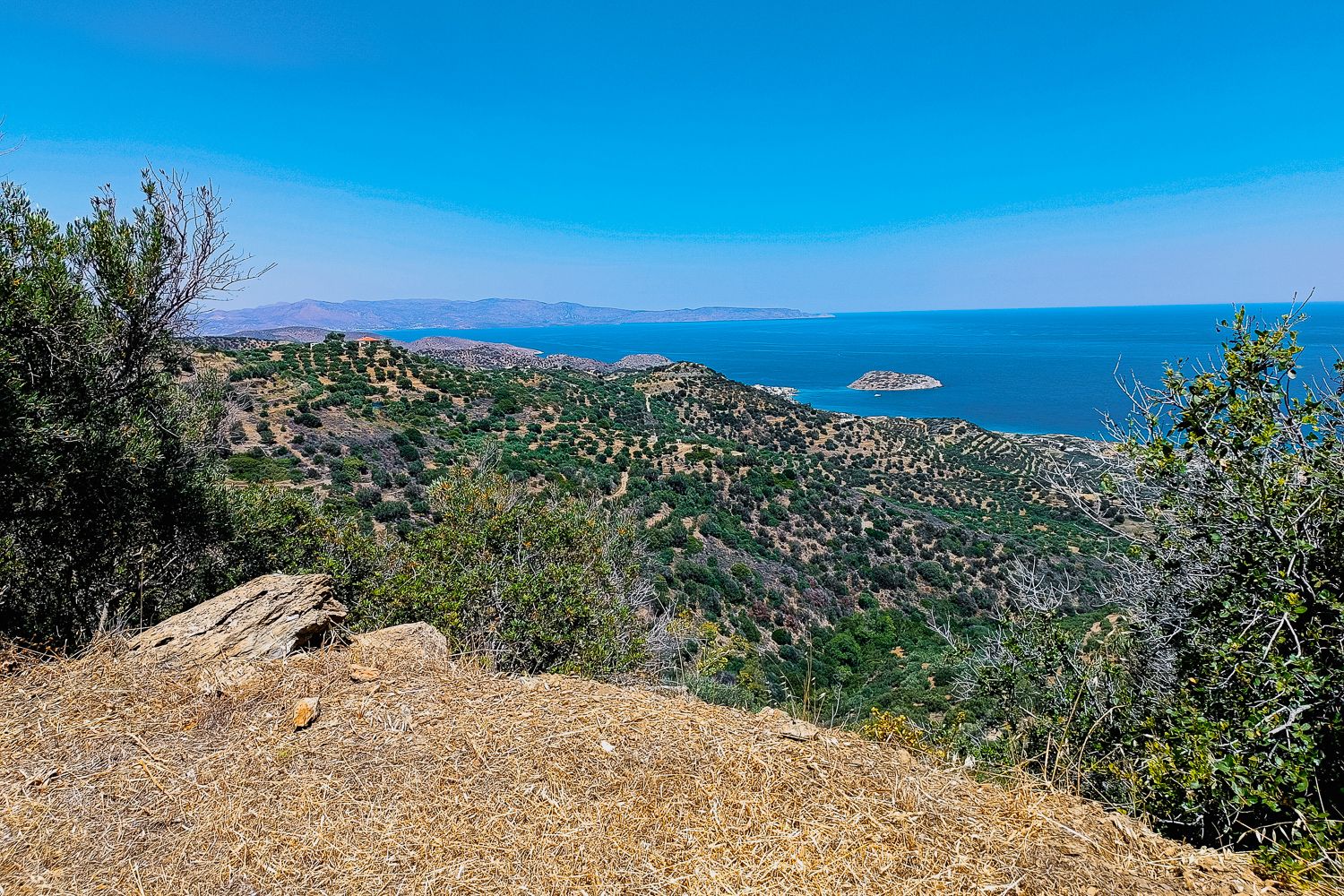
If you remember, a few years ago we had started with @traisto a herb garden. An ambition project that didn't go as expected. But there are many rosemary plants thriving, more than we could ever use and there are many more herbs growing voluntarily all over the place, that I couldn't overlook.
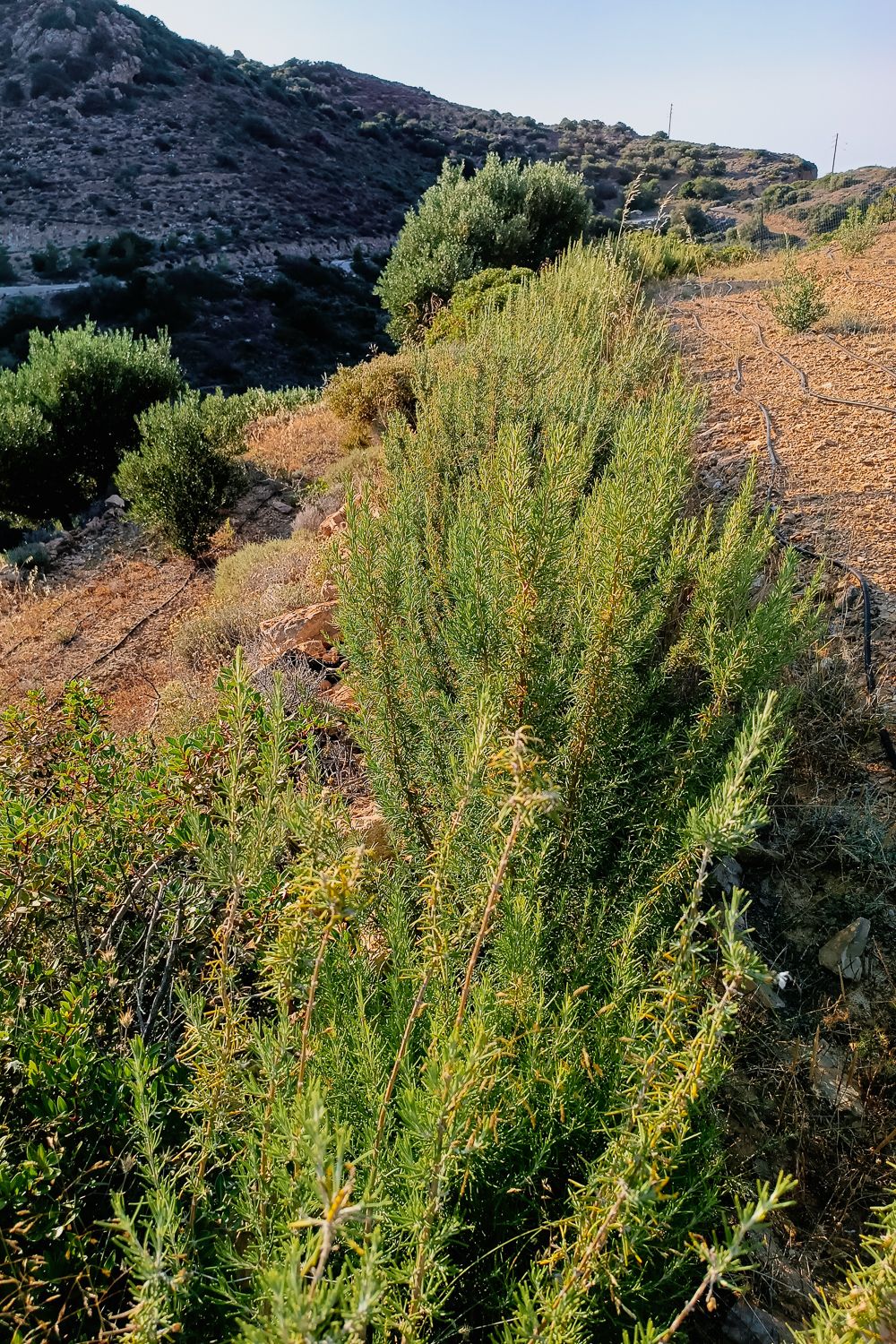
Like thyme, or the best sage that I have ever tasted, I am addicted to the sage of this area and pink rock-rose (cistus creticus) that I also love! The last twelve years, since we first moved to Crete, those herbs are always in our kitchen and keep us company at the cold nights (or mornings) of the winter!
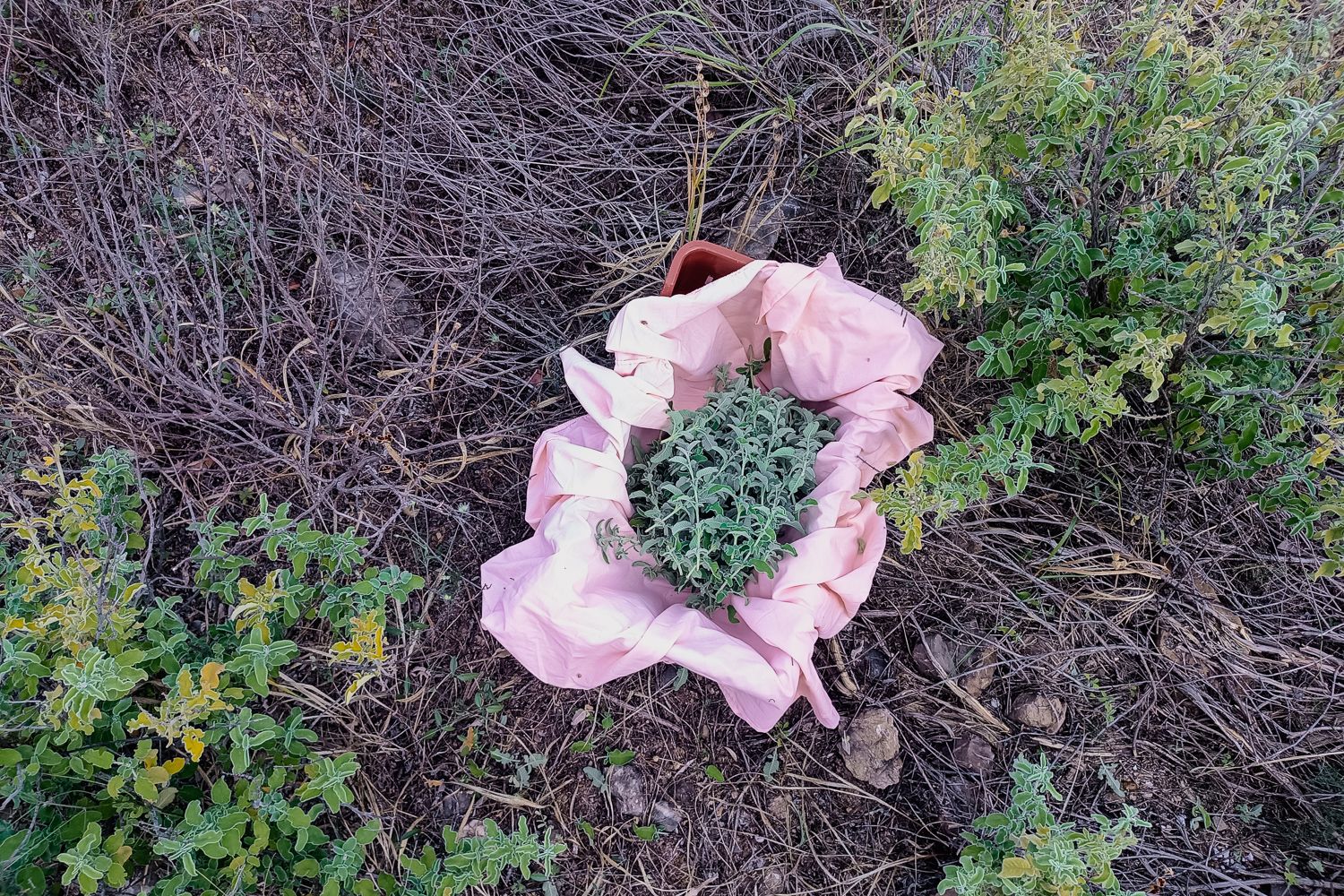
I am sure that a weaved basket would have been more stylish and more photogenic than an old sheet but I had to improvise with what I had and this one was clean and did the job just fine :)
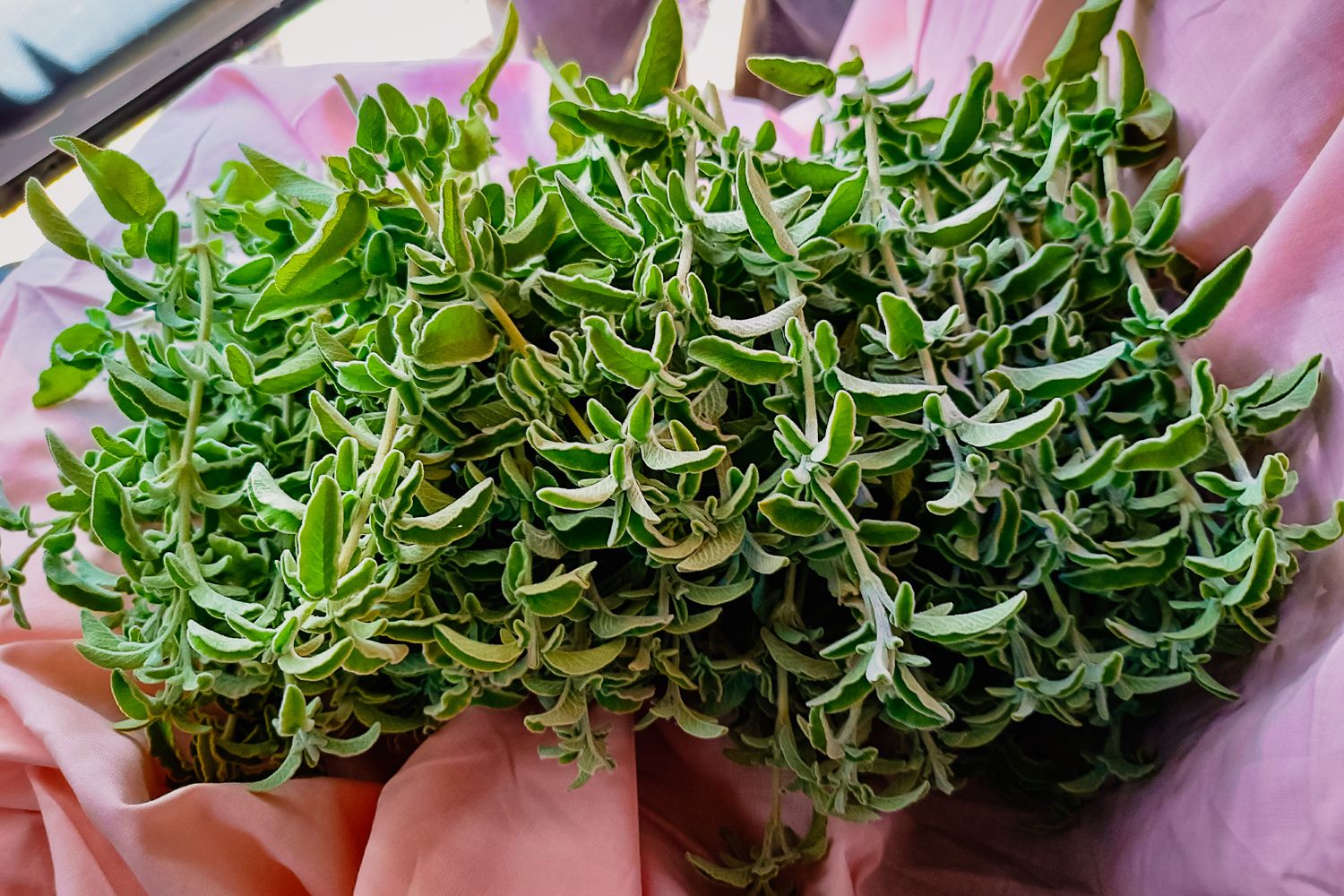
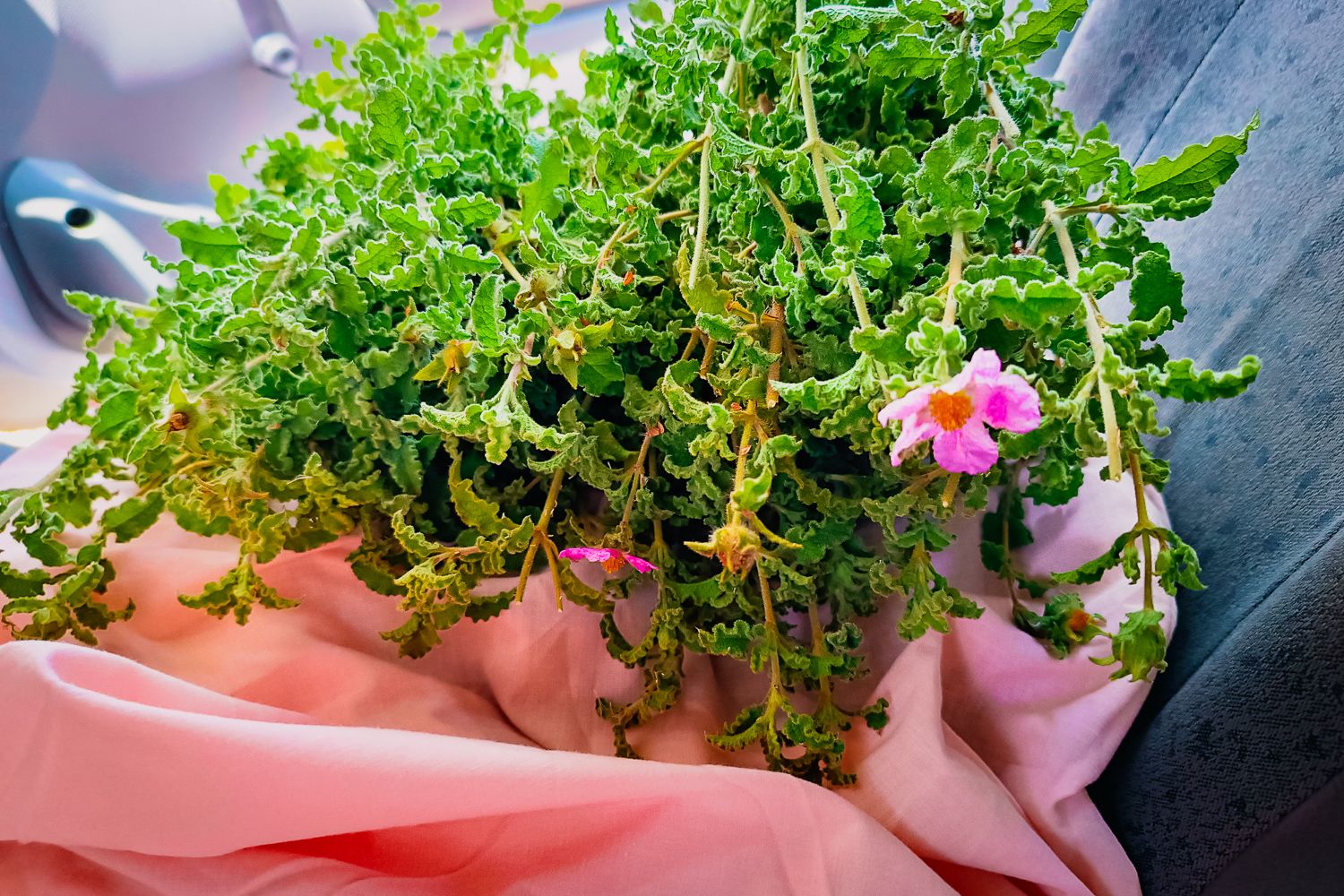
One last thing before I go. Five years ago, we built with @traisto a hugelkultur bed. One more project that demanded a lot of effort and didn't pay off as expected. But I was very pleased to see that one of the first herbs that we planted in this bed is, if not thriving, in a very good condition. And I am saying this because it is a lemon beebrush, a delicate herb that requires regular watering and yet it has survived with no watering at all for years and even summers extremely hot and arid. Especially last summer was so hot that killed even big trees that were standing for decades. So even if this specific bed was not the success that we were expecting, I believe a lot to the supremacy of hugelkultur and I can't wait to try it again!
I am closing with a picture of a flower, one of the ones that we call weeds and I was supposed to clean our fields from. But instead I just admired it :)
I think this is the biggest garden journal post I have ever written. Which is understandable, considering that the last couple of years, I am away from my farm most of the time and I only write here twice a year and if so. My best regards to the hive garden community, I am away but I haven't forgotten you :)
Cheers from the summer entering Greece!